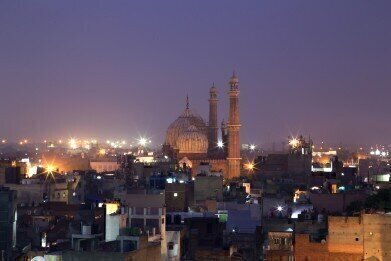Air Clean Up
What Is Delhi's 'Deadly Pollution Cocktail'?
Nov 16 2018
The Indian capital of New Delhi has been suffering from a “deadly cocktail” of pollution over recent weeks according to a government official, as a variety of factors coincided to contribute to a lingering and hazardous cloud of contamination over the city. Vast amounts of pollution caused by the illegal practice of stubble burning have exacerbated an already high level of contamination, while the celebrations surrounding the Hindu festival of light Diwali have compounded matters.
All of this has served to create a situation in which the city’s 19 million populace have been repeatedly exposed to unsafe levels of pollution. Environmentalists say that the government must do more to tackle the issue on a year-round basis and not just take short-term measures to alleviate the problem when October and November arrive.
Different ingredients in the cocktail
Delhi has long suffered from a poor reputation when it comes to air quality; a 2016 assessment of nitrogen oxides (NOx) over the city found ten hotspots where pollution was particularly bad, with transportation the biggest contributing factor to the haze. However, the use of combustible materials such as wood, coal and dung as fuels also make conditions worse.
This perennial problem becomes more pronounced during the month of October, when farmers take to burning crop residues off their fields to make way for the next year’s sowing. This practice emits huge amounts of pollution into the air and has been outlawed by the government, but hundreds of Indian farmers still prefer it due to convenience and budgetary constraints. The government has attempted to encourage the use of expensive machinery as an alternative to stubble burning by subsidising 80% of the cost of the equipment, but many farmers still burn their waste crops regardless of the carrot or the stick.
As if this state of affairs weren’t concerning enough, stubble burning also coincides with Diwali. Taking place on the 7th November this year, the Hindu festival sees countless fireworks and other incendiary devices let off into the atmosphere, further contributing to the problem of pollution.
Governmental response inadequate
Last year, the supreme court of India ruled to ban the sale of fireworks in Delhi for the entirety of October in a bid to avoid the terrible contamination which plagued the city in 2016. This year, they have stopped short of replicating that ruling, though the government has decreed that only “green” fireworks are allowed. However, it remains unclear whether such a thing exists or, if it does, how the rule can possibly be enforced.
These half-measures have been interpreted as apathetic and inadequate by critics of the government who demand more rigorous action to clean up the city’s polluted airways. The success of recent emissions monitoring conferences in India shows that the country’s populace are becoming more cognisant of the danger posed by poor air quality, but that growing awareness does not seem to be matched by government ambition.
“The government has no political will and year after year we get into a narrative around pollution only in the month of October when the situation is really, really bad,” explained Vimlendu Jha, founder of environmental activism group Swechha. “Almost 320 days out of the 365, Delhi’s air quality is in poor condition but there is no conversation around it.”
Events
Apr 24 2024 Sao Paulo, Brasil
May 05 2024 Seville, Spain
May 13 2024 Munich, Germany
May 23 2024 Beijing, China
May 23 2024 Beijing, China














